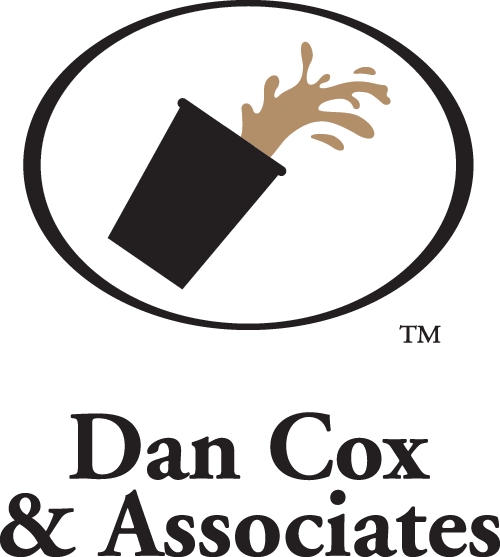Hot Beverage Spill Burns: Three Case Types We Take as a Consultant or Expert Witness
When a bad burn occurs as the result of a hot beverage spill, victims (and their insurance companies) may feel the need to place blame—often in the form of lawsuits. Dan Cox & Associates specializes in presenting the facts and defending foodservice operators when legal action arises. All of the cases we have been hired for have resulted in dismissals, pre-trial settlements, and favorable judgments for the defense.
With decades of experience in the coffee and tea industry, we’re experts in best practices for brewing, storing, and serving hot beverages. Founder Dan Cox has—literally—written the book (actually, two of them) on preventing spills and responding to lawsuits. His expertise has led to a niche role within the world of hot beverage spill litigation; he has consulted or testified as a hot beverage expert witness in more than 55 cases involving spill burns from coffee, tea, hot chocolate or hot cider, and hot water.
But not all cases are created equal. Which legal arguments are we best positioned to support? With specialized industry knowledge and a deep understanding of brewing and serving best practices, there are three broad categories of cases that Dan Cox & Associates primarily takes on.
1. Cases related to the temperature of the beverage
In cases related to hot beverage spill burns, plaintiffs often argue that their beverage was served “too hot” to be safe. But, particularly in the case of coffee or tea, best practices for brewing support these high temperatures to produce the best-tasting product that consumers demand.
Because coffee, tea, and other hot beverages have to be brewed and kept at such high temperatures for flavor and consistency, they will burn when spilled, particularly if trapped next to the skin for any length of time. Type of fabric that clothing is made of (cotton, polyester) and weave (denim, jersey) significantly affect how much exposure to hot liquids skin receives.
From years of experience, we’ve created an equation that defines the reliable relationship between the severity of a burn and the temperature, volume of liquid, exposure time, area of the body the spill occurs, and gender and age of the burn patient. This enables us to work backwards from known variables to determine the temperature of the beverage at the time of the spill. We then combine that data with knowledge of brewing chemistry to present that case that a beverage was not served “too hot.” In fact, words like “scalding,” “steaming,” “excessive heat,” and “out of industry standards” in a lawsuit often indicate that it is a strong case for us to defend using the scientific reasons that beverages are served at high temperatures.
In Graham v. Yum Yum Donut, the plaintiff ordered hot tea, carried the cup with no lid next door and set it on the bar where she worked, and then spilled it on herself—causing severe burns—while opening a box of donuts she had also purchased. While the lawsuit claimed the drink was excessively hot, expert testimony as to the best practices of brewing tea confirmed the tea was an appropriate temperature. The court dismissed the charges and the jury dismissed the case 12-0 in favor of the defendant.
2. Cases related to the functioning of commercial brewing equipment
As part of our work with Coffee Enterprises, Dan Cox & Associates has an encyclopedic knowledge of every piece of mainstream commercial brewing equipment, including specifications, operation, durability, safeguards, and servicing. This expertise allows us to speak authoritatively in cases where the safety and functioning of brewing systems are called into question.
Because commercial equipment is tasked with so precisely heating and holding water at high temperatures, the machinery has built-in controls and safeguards to prevent the water from exceeding specifications. Regular servicing maintains safe operation. When a plaintiff claims that water exceeded brewing temperatures, we are skilled in identifying and refuting—through machine logs, temperature monitors, and service records—any baseless claims.
In DeRuyver v. Omni La Costa Resort and Spa, a small child pulled a carafe of hot coffee onto herself, causing third degree burns. The plaintiff argued that the serving carafe held the coffee too hot, and that the lid came off too easily when poured. In testimony, we countered that the carafe held the hot beverage at an appropriate temperature, and the manufacturer was not held liable.
3. Cases involving a drive-thru window, or spills that happen after the beverage was served
Most hot beverage spill burn cases involve a drive-thru window. Only 17% of Americans are left-handed, and because we drive on the left, that means the vast majority of drivers are bringing a hot beverage across their body with their non-dominant hand. Drivers often squeeze a cup to hold it tightly, thus causing a drop or two to spill over, and then reflexively jerk the cup away from their lap, causing a much larger spill.
Other cases involve drivers or passengers who are burned while:
- driving or pulled over preparing their coffee (as in the infamous Liebeck vs. McDonald’s hot coffee lawsuit)
- walking with their coffee cup
- preparing or consuming their coffee at their home, office, or other location
Hot beverage spill burns can be serious injuries. In these cases, we’re here to help present the truth and ensure that unfair blame doesn’t result in a tarnished image for brands who are working to make the best possible product.

